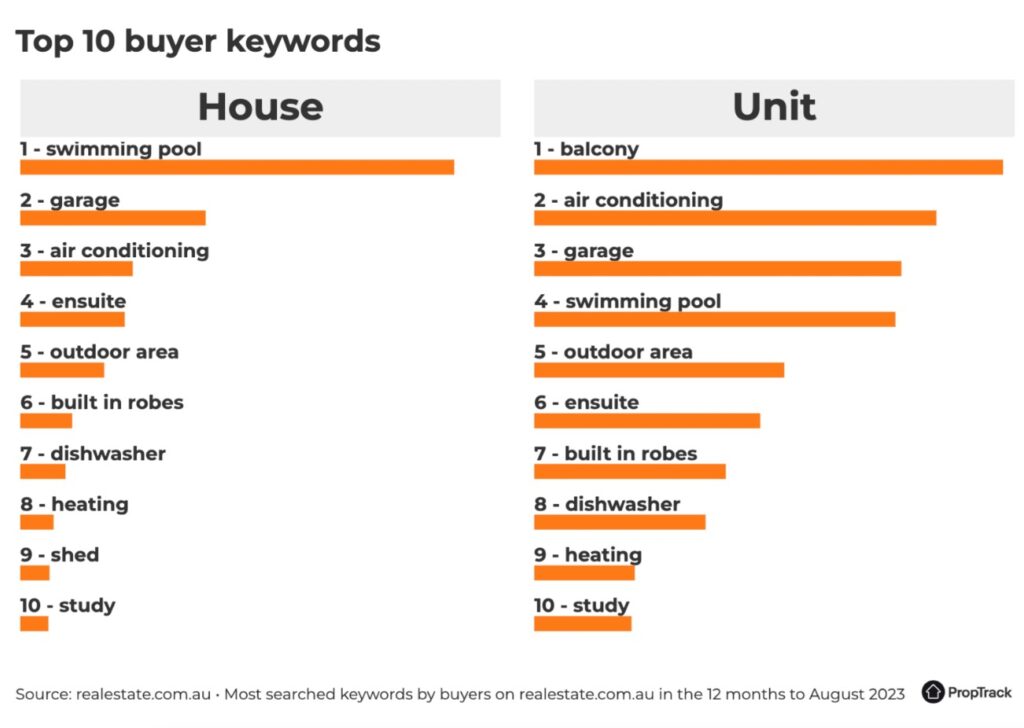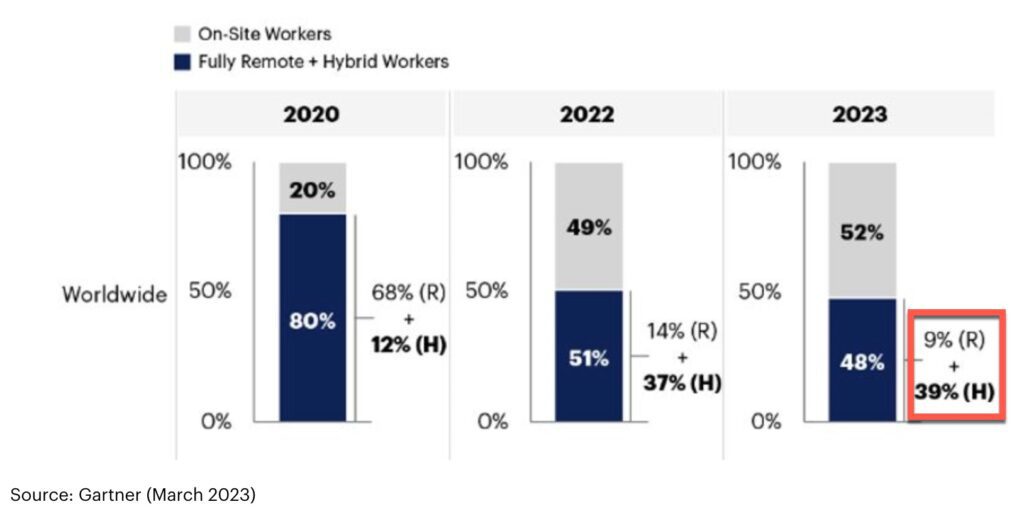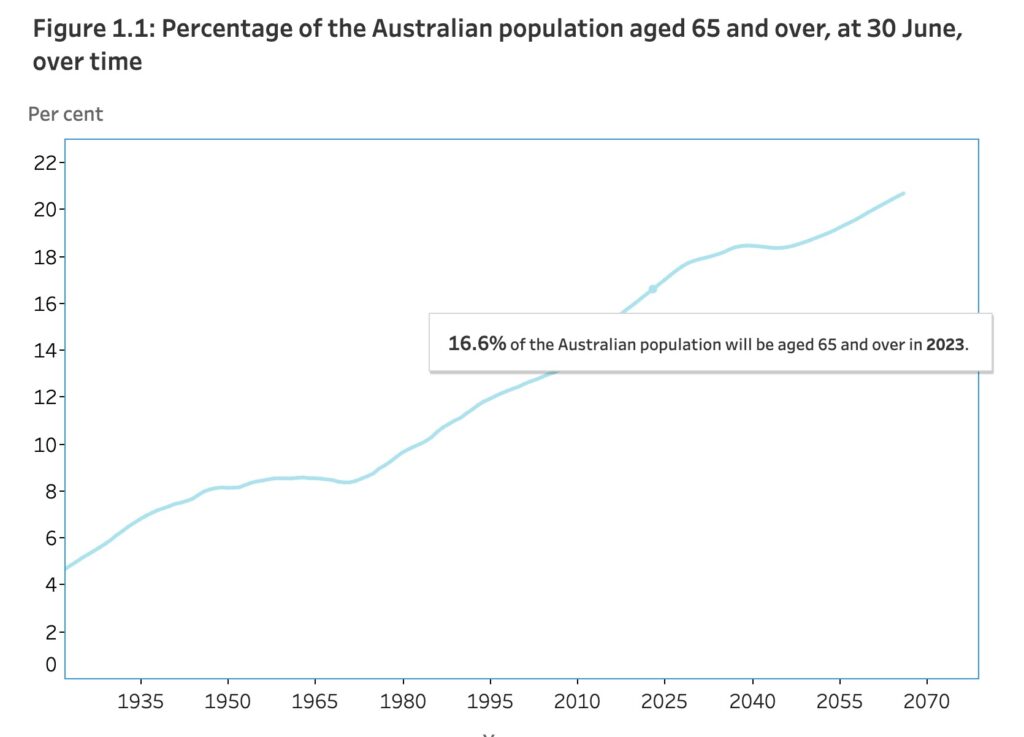A recent keyword search study by REA identified some growing and emerging trends. From brick dwellings to apartment balconies, some are anticipated yet some are surprising. It is suggested that the lockdown experience from COVID has shaped some of our new preferences while other demographic drivers such as our aging population are clear initiators.
The following buyer keywords have dominated for 2023. It’s important to note that Australia is a large country though, and our varying climates and demographic profiles don’t produce the same statistics. For example, while swimming pool was the most frequent search term nationally for houses, Tasmania, Victoria and ACT bucked this trend. Clearly, cold climate inhabitants don’t value pools like their warmer counterparts do.

The travel restrictions placed on us all during COVID triggered many households’ decisions to upgrade their home with luxuries that could offset the international border closure. Pools, balconies and outdoor spaces increased as search terms following the pandemic, as did study spaces.
The question remains: are searches for studies here to stay, or will this search term fade into the distance as we return to the office?

This recent study by Gartner shows a global decline in fully-remote work, but does highlight a plateauing of hybrid workers (defined by those who attend the office at least one day per week).
I noted during COVID how prolific our changed requirements for an extra bedroom were. Every purchaser who would have formerly nominated a 3BR home increased their requirements to 4BR’s. And likewise, 2BR cottages were less desired during this time, as couples added a study each to their criteria list.
The mention of brick as a search term is not surprising. While the REA article suggests that people prefer brick for energy efficiency and harsh weather conditions, our varied nationalities also play a part. Many other cultures carry a deep stigma when it comes to weatherboard houses. This goes beyond the need to paint and insulate, and is more about perceived wealth and social expectations within their communities. I often work with clients who are born overseas and their resistance to timber dwellings is extreme, regardless of suburb or building quallity.
Garage is a common request from clients and this matches the REA study. Specifically, we are now fielding wish-lists specifically relating to electric vehicle charging stations. Until our nation is better prepped to offer external charging facilities, this demand is only likely to keep growing. Developers need to consider this as they design and build high density properties with basement/undercover parking.
One surprising observation I made when reading this article, however is the absence of the term no stairs.
This is a rapidly growing request that we are fielding. In fact, only this morning over breakfast with friends who are our age, we were discussing our ‘next homes’ and they reinstated this criterion. We’ve focused on our aging Baby Boomer generation, but the reality is that Gen X are not all that far from approaching retirement. Within two years, our eldest gen X’ers are turning sixty. This generation are thinking about ways to future-proof their next move. They are all too familiar with the challenges of an aging generation and the impact of reduced mobility. They are also familiar with the cost of stamp duty. This generation will likely see a switch to city apartment living over the coming decades as our urban planners support our cities increasing their density, and amenity becomes more important.
The changes we’ll see to our way of life and our living preferences will be notable. Our age profile is set to change significantly, particularly over the next decade.
REGISTER TO OUR NEWSLETTER
INFORMATION
CONTACT US
1A/58 ANDERSON STREET,
YARRAVILLE VIC 3013
0422 638 362
03 7000 6026
CATE@CATEBAKOS.COM.AU


